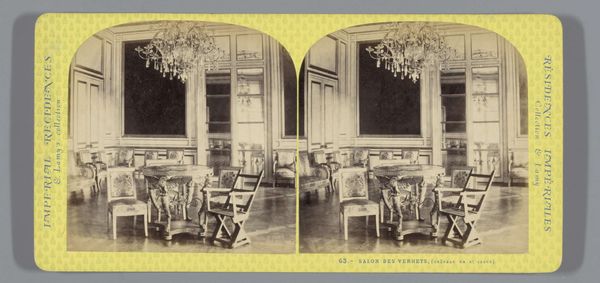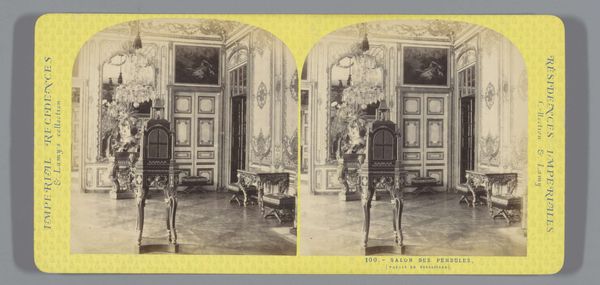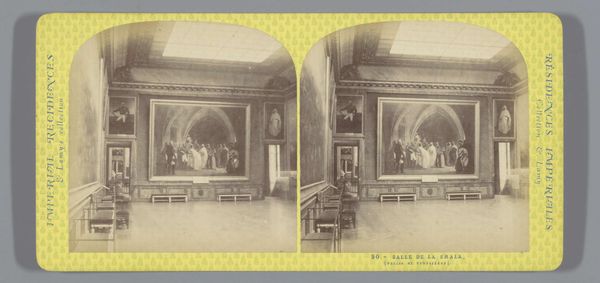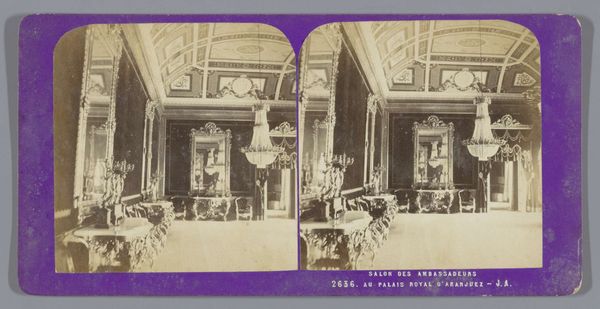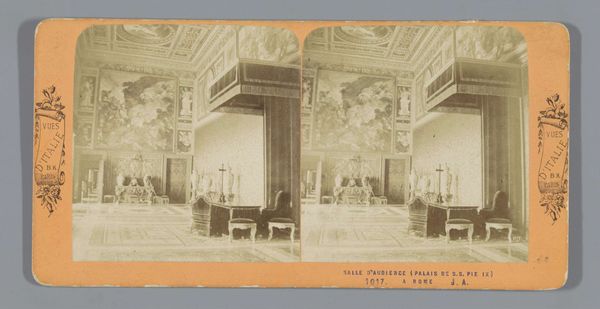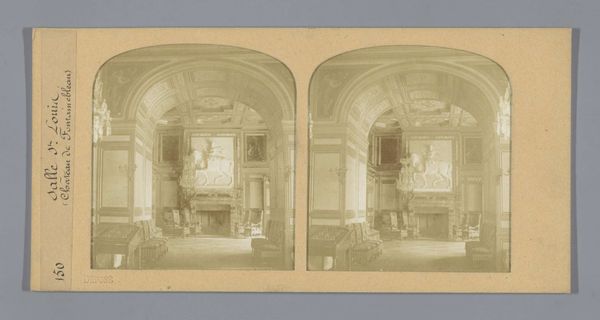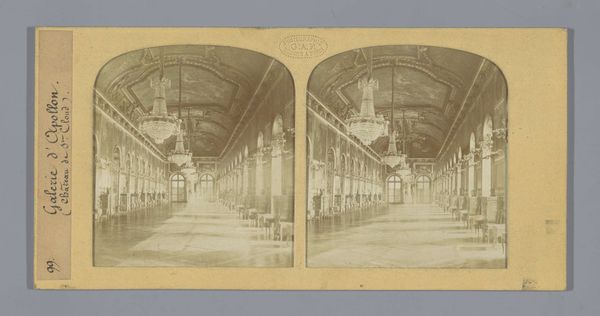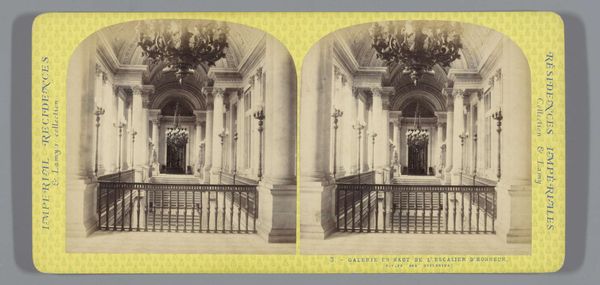
Vestibule van het Grand Trianon in de tuin van Versailles c. 1860 - 1880
0:00
0:00
photography, gelatin-silver-print
#
neoclassicism
#
landscape
#
photography
#
gelatin-silver-print
Dimensions: height 85 mm, width 170 mm
Copyright: Rijks Museum: Open Domain
Editor: Here we have a gelatin silver print by Ernest Eléonor Pierre Lamy, titled "Vestibule van het Grand Trianon in de tuin van Versailles," dating from around 1860 to 1880. It captures an interior hallway, opulent but deserted. What strikes me is the almost clinical precision with which Lamy documents the scene, turning it into a space defined by repetition and geometry. What stands out to you? Curator: Indeed, that precision speaks volumes. This gelatin silver print showcases a technological advancement—mass reproduction that democratizes access to the elite spaces it depicts. It shifts the experience of Versailles from being something exclusive to the aristocracy to an object of consumption, reproducible, and saleable. The very act of capturing this space on film, developing it, and creating multiple prints relies on the labour and materials within the photographic process. What sort of social dynamics do you think Lamy might be implying, intentionally or unintentionally, by focusing on a place constructed for display? Editor: So you are thinking about the access to the representation and all that the image doesn't show - the hands of workers involved, the socio-economics...I guess that perspective challenges the initial impression of straightforward documentation of beauty and shifts the meaning! What are the implications of transforming a location like the Grand Trianon into a readily available photographic print? Curator: Precisely. We have to consider the labour involved in creating such a photograph and the accessibility this object held for middle-class consumers eager to vicariously inhabit these grand spaces. This speaks volumes about aspiration, consumption and, fundamentally, how images shape our understanding of power and access. The circulation of these images helped establish a collective visual memory. Do you find this consideration shifts the image for you? Editor: Absolutely! I’m seeing less documentation and more of an active commentary on social mobility, consumption, and the changing role of art in a rapidly industrializing world. Thank you. Curator: And for me, your insight helps underscore the enduring impact these photographs had, far beyond just mirroring their elite subject matter.
Comments
No comments
Be the first to comment and join the conversation on the ultimate creative platform.

